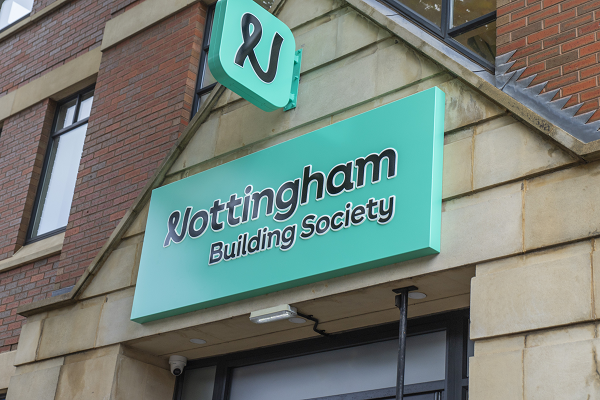Stamp Duty changes in 2025 and what they mean for future homebuyers
From Tuesday 1st April 2025, a significant change was made to Stamp Duty charges that will impact property buyers in England and Northern Ireland. Whether you’re a first-time-buyer, a mover, an investor, or a landlord, the imposed changes will affect your next home purchase.
In this article, we will cover everything you need to be aware of, from what changes have been made to the Stamp Duty thresholds through to what it means for different types of buyers.
How much will Stamp Duty be from April 2025
From 1st April 2025, Stamp Duty Land Tax (SDLT) thresholds reverted to pre-September 2022 levels for homebuyers in England and Northern Ireland.
First-time buyers are among the hardest hit, as the nil-rate threshold will drop from £425,000 to £300,000, meaning those purchasing above the revised amount - which is slightly above the median price to buy a UK home, according to recent data from the Office for National Statistics - will now pay 5% tax on properties priced between £300,000 and £500,000.
The general SDLT nil-rate threshold will also fall from £250,000 to £125,000, introducing a 2% tax on the £125,001 - £250,000 band. Additional property buyers will face a new 7% tax rate on properties between £125,001 and £250,000, up from 5% currently.
What Stamp Duty will I now need to pay?
The answer to this question will be dictated by what buyer category you fall into.
As alluded to in the previous section, first-time buyers are the hardest hit and could pay over as much as £5,000 more in stamp duty, and home movers up to £2,500 more, depending on their property value.
For example, the Stamp Duty on a £300,000 house previously required no stamp duty charge. As of 1st April 2025, this has increased to £2,500.
A more detail breakdown of the stamp duty threshold changes can be found below:
| Property price | Previous SDLT rate | New SDLT rate |
| Up to £125,000 | 0% | 0% |
| £125,001 to £250,000 | 0% | 2% |
| £250,001 to £925,000 | 5% | 5% |
| 925,001 to £1.5 million | 10% | 10% |
| Over £1.5 million | 12% | 12% |
We have updated our Stamp Duty calculator to reflect the most recent rate changes. This is a great starting point for any future homebuyer to understand how much they are likely to be paying in Stamp Duty on their next property.
How stamp duty rates are changing on additional property purchases
If you already own a residential property worth £40,000 or more, and you buy another (or a part of one), you also have to pay an additional amount on top of the rates above.
From 1st April, this will be another 5% on properties worth up to £125,000, with higher rates for more expensive purchases. Firms which buy dwellings worth more than £500,000 have to pay a single rate of stamp duty of 17%.
For example: if you’re purchasing a second home valued at £200,000, you’ll now pay £10,000 instead of £5,000 in SDLT. Buy-to-let landlords and second-home buyers will need to budget for increased tax costs.
Frequently asked questions
Stamp Duty Land Tax (SDLT) is a tax you must pay when buying property or land above a certain price in England and Northern Ireland.
You’ll need to pay SDLT if you:
- Buy a freehold property.
- Purchase a new or existing leasehold.
- Buy through a shared ownership scheme.
- Take on a mortgage or buy a share in a house
The amount you owe depends on the property's value, whether it’s for residential or commercial use, and if you already own other properties.
Learn more in our Stamp Duty guide.
Stamp Duty must be paid to HMRC within 14 days of completing your property purchase. Your solicitor or conveyancer usually handles this on your behalf.
You must pay Stamp Duty within 14 days of completing your property purchase. Most buyers pay through their solicitor or conveyancer, but you can also:
- Pay online via HMRC.
- Make a payment by cheque or at a bank.
If Stamp Duty isn’t paid on time, HMRC may apply penalties and interest charges.
Yes, you can borrow more to cover your Stamp Duty costs by increasing your mortgage loan. However, this may not always be the best option.
Things to consider:
- SDLT must be paid in full within 14 days of completing your purchase, you can’t spread the cost over time like mortgage payments.
- Borrowing extra means paying more in interest over the life of your mortgage.
- If the additional borrowing pushes you into a higher loan-to-value (LTV) bracket, you could face higher interest rates on your entire mortgage.
It's essential to weigh up your options and seek financial advice before deciding.
You may be eligible for a Stamp Duty refund if:
- You paid the higher rate of SDLT on a second home but sold your previous property within three years.
- You overpaid due to an SDLT miscalculation.
To claim a refund, you’ll need to submit a request to HMRC with supporting documents.
Last updated on:



